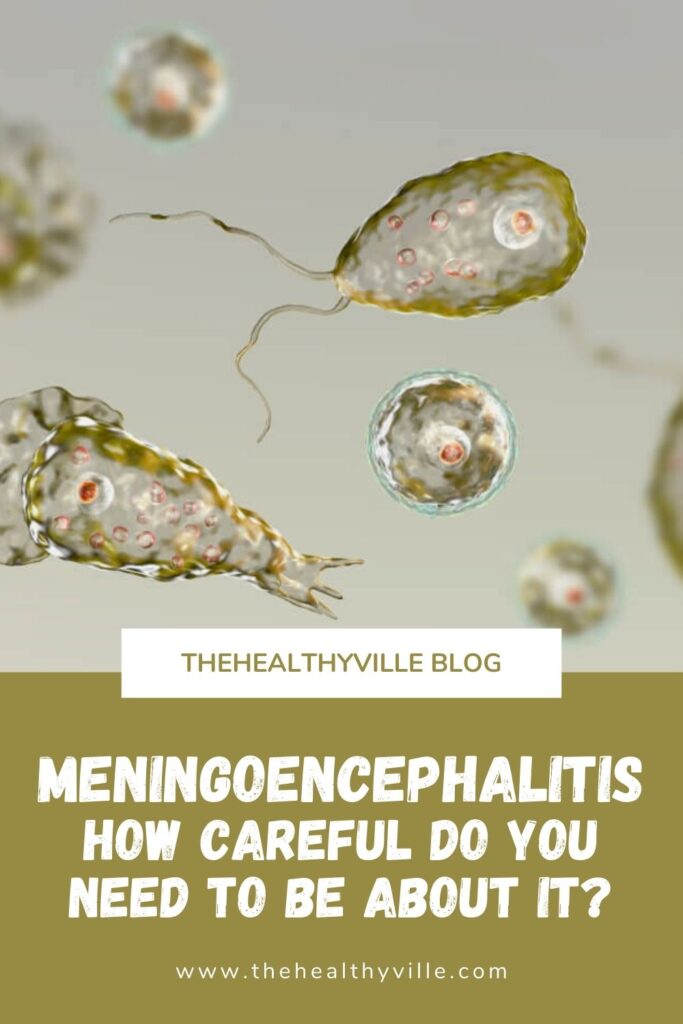Meningoencephalitis is a rare disease is contracted by bathing in freshwater lakes, where the microorganism takes advantage to sneak into our nervous system.
Primary amebic meningoencephalitis is a rare disease that affects the nervous system. Thus, it affects both the encephalon (made up of the brain, cerebellum and medulla oblongata) and its spinal cord.
Therefore, primary amoebic meningoencephalitis is a disease with a high mortality rate, close to 99%. This is because this subtype of amoeba progressively destroys the nervous tissue of the altered regions.
Symptoms of primary amebic meningoencephalitis
The signs associated with this disorder usually appear between 2 and 15 days after exposure to the pathogen.
- Alterations in the sense of smell and taste that end in the loss of one or both senses.
- Fever that can vary in intensity in each patient.
- Spontaneous and bothersome headache or headache.
- Stiffness or numbness of the neck muscles.
- Photosensitivity or discomfort to light exposure.
- Nausea and vomiting.
- Drowsiness or trouble staying awake.
- Confusion or loss of cohesion of ideas.
- Decreased balance of the patient.
- Seizures.
- Hallucinations.
Diagnosis of primary amoebic meningoencephalitis
As a general rule, diagnosis is a difficult medical process due to the short life span of patients.
Thus, the most common methods to identify this disease and rule out other possible ones are:
- Lumbar puncture. In it, a small amount of cerebrospinal fluid (which protects the brain and spinal cord from possible trauma) is removed and analyzed.
- Brain biopsy. A small sample of the patient’s brain is obtained and studied in a laboratory. Staining or genetic screening techniques can also be applied to pinpoint the causative organism.
Causes
This pathology is caused by the parasitization of the amoeba Naegleria fowleri. As a general rule, these types of microorganisms live in contaminated or stagnant water.
However, they can only reach a person’s nervous system through the mucosa or inner layer of the nasal cavity. Thus, the infection begins in the olfactory bulb (which contains olfactory receptors) and can reach various parts of the brain. The invasion and spread process usually takes 1 to 2 weeks.
Normally, after this limited period of time, the patient cannot bear the disease and dies.
Treatment of primary amoebic meningoencephalitis
Currently, research is continuing with the aim of improving treatments against the disease. However, the limited life expectancy of patients with this problem makes it difficult to determine which are the best drugs or therapies.
Doctors carry out the tests with the aim of detecting this microorganism n the final stage of the pathology.
This is because patients usually have unspecific symptoms in the first days after exposure to the pathogen.
As a general rule, doctors administrate antifungal medications such as amphotericin B intravenously.
This chemical compound is also great for treating other clinical cases of parasitism (as in leishmaniasis, for example).
Prevention
On the other hand, we can cite a series of simple measures that allow to considerably reduce the risk of suffering from the disorder:
For example, avoid swimming in freshwater lakes, especially during heat waves.
When the water is warm, these types of microorganisms are more active and in a comfortable environment.
Doctors recommend the use of nasal forceps to avoid water contact with the nasal cavity and avoid diving.
Likewise, these recommendations should be followed by children and young people, since they are the group most prone to developing the condition.
In these types of patients, the immune system is still in the process of development.
This means that the body’s “defenses” need to go the extra mile to destroy the pathogen.
Thus, the severity of the condition worsens the younger the patient and also, the symptoms will be more striking.
Don’t forget to SHARE what you know about meningoencephalitis with your friends and family on your social networks!

